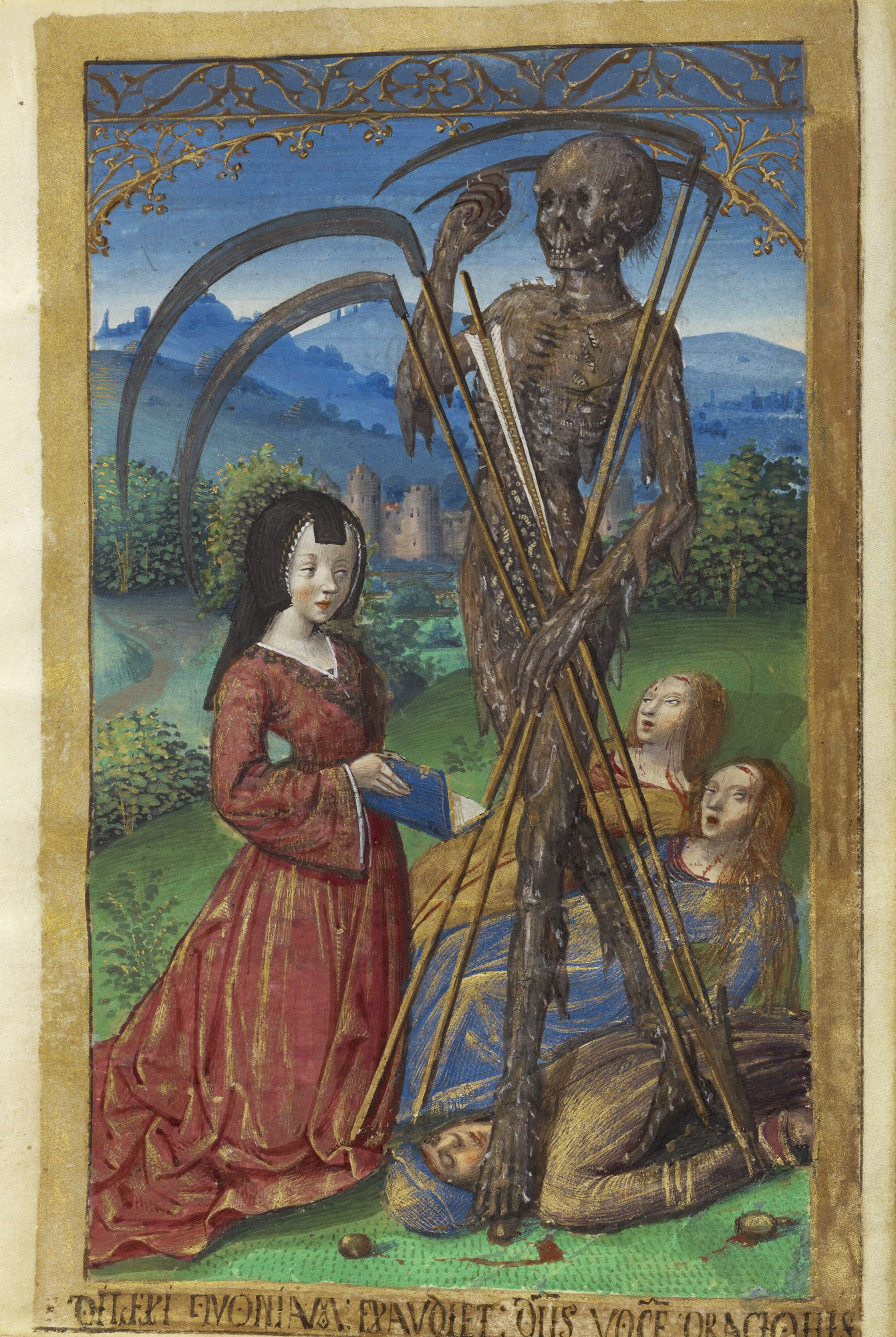Guides to life are a dime a dozen these days. From self-help books to lifestyle magazines, living well has become an obsession of society.
But this wasn’t always the case. Hundreds of years ago, in the Middle Ages, people were more concerned with how to die a proper and respectable death.
This is the focus of the Getty Museum’s exhibit “Heaven, Hell, and Dying Well: Images of Death in the Middle Ages,” a display of medieval manuscripts that seeks to explore the imagery of Christian views on death.
Martin Schwarz, curator of the exhibition, said most of the pieces displayed are books of hours, or prayer books that were personally commissioned by men of the wealthy classes for themselves or as presents for their wives and daughters. The books were usually small enough to be carried comfortably to church on a daily basis and were filled with intricate illustrations alongside religious texts.
“(The manuscripts) were used as a means for contemplation and preparation for death,” Schwarz said.
Detailed pages depict scenes of judgement; men, now helpless, with their fates in the powerful hands of God, wait to receive either their punishment, a sentence to hell, or their reward, the gift of heaven. Though both images of heaven and hell are present, the horrific images of hell, which focus greatly on the interaction of the individual with demons of death engulfed in flames, dominate the exhibition.
“In general, people find representations of hell more interesting than those of heaven, especially in a time when the church used the fear of hell to (encourage individuals) to live good lives and prepare for a good death,” said Dr. Richard Emmerson, who gave a presentation at the Getty regarding the exhibit.
A striking image titled “Denise Poncher Before a Vision of Death” is a depiction of the owner of the prayer book reading the manuscript as the skeletal figure of Death looms over her. Emmerson, dean of the School of Arts at Manhattan College, said the innocence and beauty of the girl and the hills in the background serve to contrast the grotesque image of Death, which is a key component of art during the time period.
“(The idea that everyone is mortal) is a typical part of the medieval art of making a good death. The message is to be aware that death could strike at any moment,” Emmerson said.
Emmerson also said that since most of the books are made on an individual basis and not mass produced, the images vary artistically but not in content or in essential style.
“The colors were a stylistic mode of the time period,” said Elizabeth Morrison, acting senior curator of manuscripts at the Getty. “The books showed the wealth of the owner and therefore the use of rarer colors was a means of achieving this display throughout the period.”
The books’ vibrant colors highly contrast the somber nature of the depictions themselves and were employed by artists for purposes of entertainment. Artists also began including pictures of scenes from secular stories in the books, leading to the books’ transition in purpose from being purely religious to a source of personal enjoyment.
In the late Middle Ages, a shift occurred in the way hell was portrayed, with more graphic and realistic representations of the afterlife ““ a development Schwarz attributes to the fact that the idea of hell has become more elaborate over time.
“There is a continuous evolution of what hell is, as a response to developments in technology, how the church defines hell and (the image) art itself has built,” Schwarz said.
As the Middle Ages gave way to the Renaissance, scientific developments influenced the illustrations in some of the displayed pieces, Morrison said. One piece titled “Map of Hell” distinguishes itself for this reason; it is a map of hell as described in Dante’s “Inferno,” with a scale of reference, mile markers and geographic locations all noted.
Death in many of the images, particularly “Denise Poncher Before a Vision of Death,” bears a striking resemblance to modern-day illustrations such as the Grim Reaper ““ an indication of the persistence of medieval ideals into the present despite the modern world’s focus on a better life.
“Anything that really has to do with death itself and its demons and tortures has proven to be such a strong vision that (it) is used even today,” Schwarz said.
